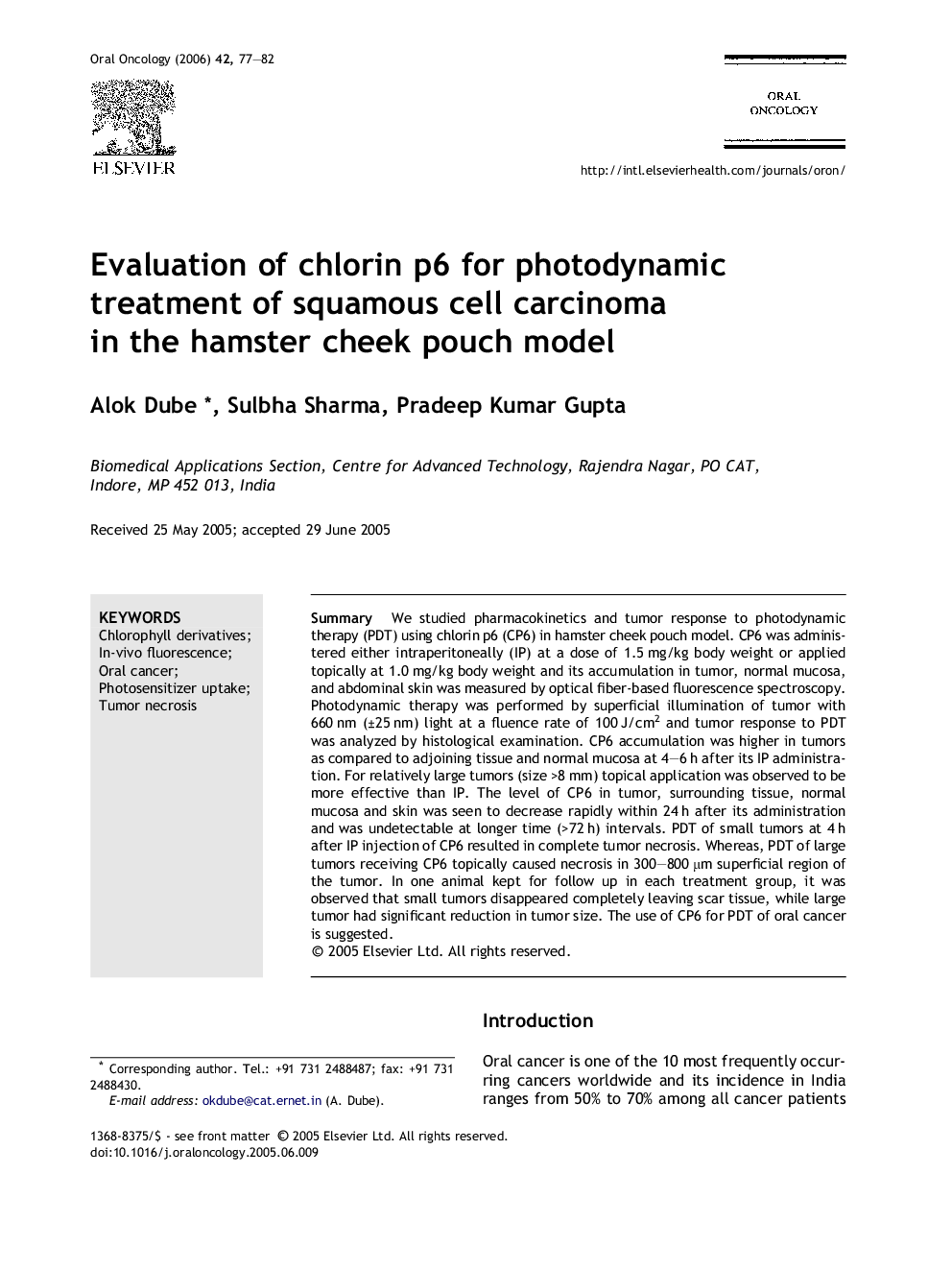| Article ID | Journal | Published Year | Pages | File Type |
|---|---|---|---|---|
| 3166065 | Oral Oncology | 2006 | 6 Pages |
SummaryWe studied pharmacokinetics and tumor response to photodynamic therapy (PDT) using chlorin p6 (CP6) in hamster cheek pouch model. CP6 was administered either intraperitoneally (IP) at a dose of 1.5 mg/kg body weight or applied topically at 1.0 mg/kg body weight and its accumulation in tumor, normal mucosa, and abdominal skin was measured by optical fiber-based fluorescence spectroscopy. Photodynamic therapy was performed by superficial illumination of tumor with 660 nm (±25 nm) light at a fluence rate of 100 J/cm2 and tumor response to PDT was analyzed by histological examination. CP6 accumulation was higher in tumors as compared to adjoining tissue and normal mucosa at 4–6 h after its IP administration. For relatively large tumors (size >8 mm) topical application was observed to be more effective than IP. The level of CP6 in tumor, surrounding tissue, normal mucosa and skin was seen to decrease rapidly within 24 h after its administration and was undetectable at longer time (>72 h) intervals. PDT of small tumors at 4 h after IP injection of CP6 resulted in complete tumor necrosis. Whereas, PDT of large tumors receiving CP6 topically caused necrosis in 300–800 μm superficial region of the tumor. In one animal kept for follow up in each treatment group, it was observed that small tumors disappeared completely leaving scar tissue, while large tumor had significant reduction in tumor size. The use of CP6 for PDT of oral cancer is suggested.
